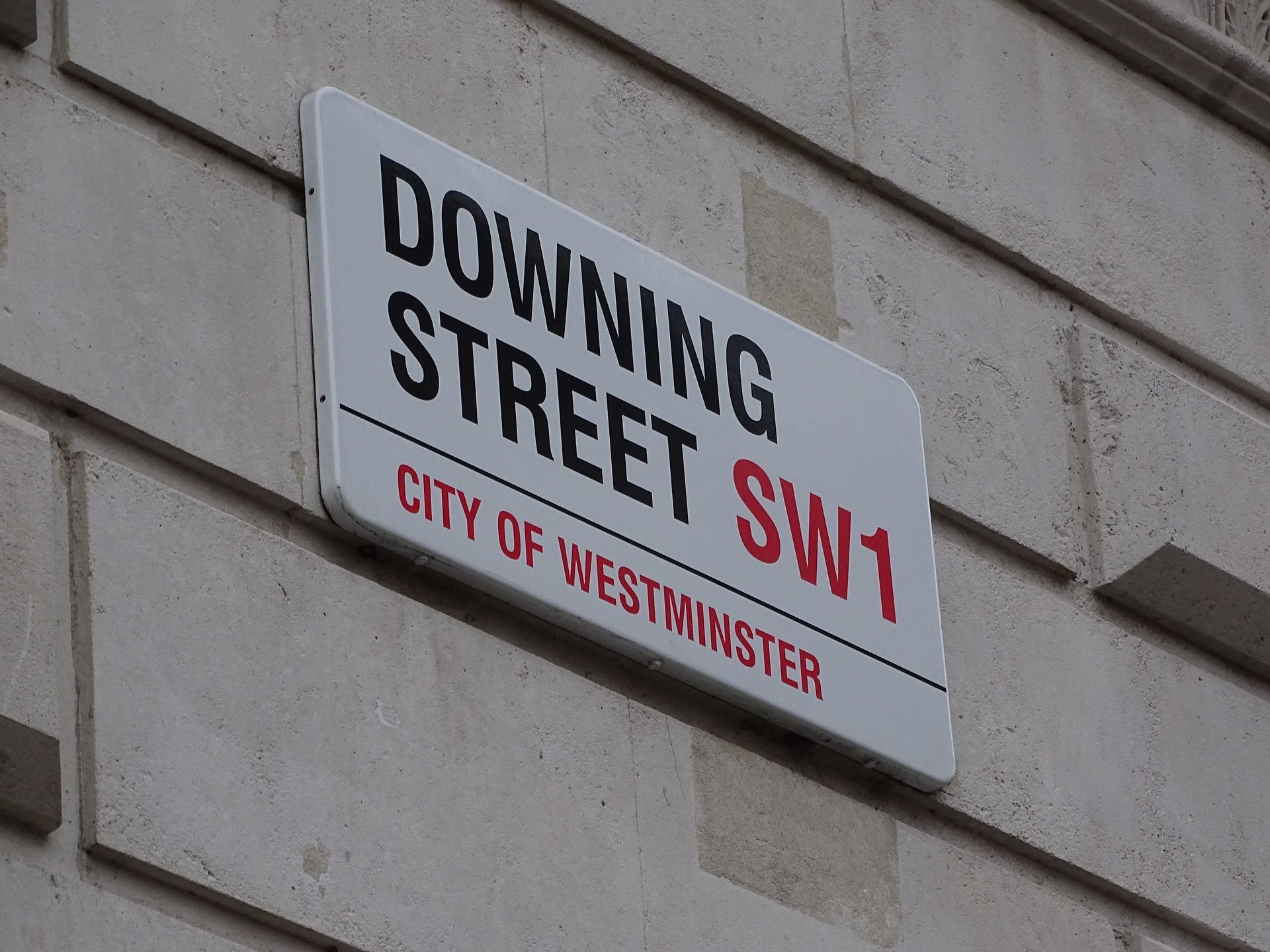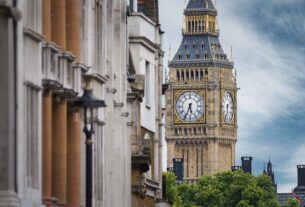Support NewsLeaf.com from as little as £1 by donating via PayPal. Click here to donate.
Dominic Cummings has left. Walking out of Downing Street with a cardboard box; standing on the curb of Whitehall like a Parliamentary staffer after a long night at the Red Lion. Dominic Cummings’ tumultuous term in Downing Street is over.
The raincoat clad SPAD, reportedly behind Michael Gove shivving Boris Johnson, in 2016 – tanking his first bid for Conservative leadership – found himself out of a job after allegedly briefing against the prime minister’s partner, Carrie Symonds.
During his controversial Westminster career, Dominic Cummings was responsible for bringing down many a Conservative leader and ending many more budding political careers; with two prime ministers, a chancellor and several cabinet ministers amongst his body count.
Cummings was marked out at an early stage as a potential national hazard. Whilst working for Michael Gove, as a Special Advisor, then Prime Minister, David Cameron, urged Gove to sack him for his political gamesmanship, “a career psychopath”, the former PM called him.
Cummings soon swept his foe in Number 10 aside. After leaving his job with Gove, he took up a position at the head of the Vote Leave campaign in the 2016 Brexit referendum. Utilising falsehoods and stolen Facebook users’ data, he led the campaign to a 52-48 victory, setting him on his path to power. David Cameron was gone by the next morning and Cummings’ reputation as a visionary campaigner was secured.
His old boss, Gove – despite previously saying he did not have the face to be PM – sought to lead the country to the Brexit promise land and drafted in the Brexit mastermind. Dominic Cummings was allegedly behind Michael Gove announcing his campaign just hours before the front runner, Boris Johnson, was due to take to stage at his own campaign launch.
With a crowded field of Brexiteers ready to step up, against a united remain front in favour of Home Secretary, Theresa May, there was no room for Johnson left in the race, and a bewildered room of journalists were left to pack up as he hastily cancelled his bid.
Yet despite tanking Johnson’s first shot at Number 10, he switched horses; once Johnson secured a significant majority over Jeremy Hunt in the Conservative leadership race in 2019, Dominic Cummings was drafted straight in as his top advisor. His chief task being to deliver a Brexit deal that parliament had thrice rejected.
In typical fashion, his answer was to bring down the obstacle. First, by sacking 21 Conservative MPs who were against the terms of the deal, before going after the institutions of British democracy themselves.
On what was widely reported as Cummings’ strategy, his new boss prorogued parliament and attempted to circumvent the legislature. A five-week suspension of parliament was far beyond the normal length that parliament should be prorogued, usually lasting just a matter of days, marking the ending of one session and the beginning of another.
Whilst the prorogation to end the longest parliamentary session in modern history – with parliament sitting continually since Theresa May’s disastrous 2017 general election – was not controversial, the five-week timeline was found to be illegal by the UK Supreme Court.
Gina Miller, the civil rights campaigner that had forced former Brexit secretary, David Davis, to accept the supremacy of parliament just two years earlier, forced the prime minister (and Cummings) to backtrack and reopen the doors of parliament.
Yet, Cummings’ strategy had not failed, in many histories of the first Johnson government, the strategy was never to force through the deal, only to get the people on side. With the Daily Mail calling the UK’s top court “traitors” and attacking the Tory MPs who voted against Johnson’s renegotiated (but fundamentally the same) bill, the stage was set for Cummings’ golden hour.
He resigned from Downing Street and moved to CCHQ, the Conservative Party’s SW1 headquarters, taking the reigns of their campaign for the 2019 general election. With a number of the suspended Conservative MPs defecting and many more standing down, Cummings had a far cleaner slate of Brexit supporting MPs to run.
His tactics of pitching Johnson and his Cabinet against parliament, the courts, his own MPs and, of course, the European Union, worked. A campaign that saw Hugh Grant campaign against the prime minister and saw the prime minister turning up on Kiera Knightley’s doorstep to wish for Brexit resulted in his wish being granted.
Although the polls were never close, Johnson secured a huge majority over Labour’s Jeremy Corbyn – who was also, of course, a Brexit traitor (despite probably being a Brexiteer himself). Johnson gained 48 more seats than Theresa May had done in 2017 and a 365-262 majority over Labour.
Cummings’ Johnson and the people vs the liberal elites of our institutions strategy worked.
Also read:
- BTS will be performing on ABC’s Disney Holiday Sing along
- Muslims in the UK provide free food to those in need
- BTS Shows Us How Online Concerts Are Done!
Just months later after delivering a successful vote on the Withdrawal Act in the Commons, with the new Brexiteer MPs following the whip, Cumming’s had completed his task and announced he would be out by the end of the year. Barring the appointment of a homophobe and misogynist as one of the ‘weirdos and misfits’ – and another who called on live rounds to be used against Black Lives Matter protesters – he sought to bring into Downing Street, he wielded an all-powerful sword in Downing Street.
A sword so powerful that he brought down a chancellor, who refused to accept that Number 11 should be under the direction of Number 10 and was replaced by his deputy and soon to be national young Conservatives heartthrob, Rishi Sunak.
But then along came Coronavirus and he was deemed too important to leave, standing by Johnson’s side – and sometimes his front – through a catalogue of political disasters. His ability to deliver Brexit – and dress like a geography teacher on a field trip – won him many admirers, but any goodwill towards the visionary campaigner was lost when he went for his eye test.
Whilst the early response to the pandemic was slow, and patience for Cummings was waning, it was the trip to Durham that lost him all political capital and likely was the catalyst for a disastrous summer for the government. His 400-mile round trip to his parent’s farm broke all lockdown restrictions that he had presumably helped the prime minister write; this would have perhaps been forgivable if that was the only story.
However, sitting on a foldable table in the Downing Street garden, Cummings turned up late, wearing an oversized shirt that wouldn’t look out of place in an Urban Outfitters sponsored Instagram post, and lied through his teeth to reporters. His need for childcare and desperation over his ‘duty’ won over some supporters, but his Barnard Castle ‘eye-test’ was a stretch too far. Not only had he broken the government’s own rules to isolate 200 miles from London, but took a day trip to a castle town to ‘test his eyesight’ before driving back to London. The sand timer on his tenure was flipped and each U-turn and mistake in the government’s disastrous summer was another grain closer to time up.
This was probably the tipping point. When a SPAD becomes the news story they are supposed to go; Nick Timothy and Fiona Hill were ousted by Theresa May when the story became about their mistakes in the 2017 general election and Cameron saw many senior advisors resign during his tenure. But Boris Johnson stuck by the man who had masterminded his election success, likely to the chagrin of many other Downing Street insiders.
By staying in the government, he had damaged the trust of the population when it was needed most, and it seemed that his man of the people touch had vanished. Instead, the government lurched from expired PPE purchases to being forced to feed school children after a campaign led by a Premier League footballer. The grains of sand continued to fall.
The final blow in what was a destructive and tumultuous career was a surprising one. Reports began to emerge that Cummings’ position had not changed, he intended to leave by Christmas. Less than two weeks after a leak in which the prime minister was forced to announce a second lockdown at a hastily organised and thrice delayed press conference (that ate into Strictly Come Dancing), it seemed the all-powerful and indispensable SPAD was finally dispensable.
Another top Downing Street advisor and key ally of Cummings in Number 10, Lee Cain, was ousted, supposedly as Carrie Symonds started to win the turf war against the Brexiteer camp in Downing Street.
Reports began to further emerge that Cummings had been briefing against Symonds – likely for seeing his ally swept aside – and that a simmering turf war between the environment and animal rights campaigning fiancé of the PM and the Brexiteer SPAD was turning against Cummings.
Then he was gone. Just hours after the reports started to emerge that he would soon be out of government, Cummings was waiting on the curb at Whitehall, having just left with his belongings in a carboard box.
His political career was built with a shiv; bringing down prime ministers and chancellors, ending the careers of tens of Conservative MPs. In the end, it was the former Mayor of London who he had stabbed in 2016 that saw his career end, after the prime minister’s fiancé showed that Cummings was not the most powerful person in Downing Street after all.
A blow up in the prime minister’s office saw the formerly indispensable visionary leave in haste, just how much control he had over the government over the past few months will soon be seen. Will the course of the government change? With Biden heading into the White House and the prime minister needing to carve a new path for Britain in the world, the ousting of Cummings could see a stark change in the direction of Downing Street.
______________________________________________________________________________

Calum Paton is a History and Politics graduate from the University of Warwick and he is currently studying a MA at the University of Law. His writing predominantly focuses on American and British politics. Twitter: @Paton_Calum

 Image by paulbloch from Pixabay
Image by paulbloch from Pixabay


